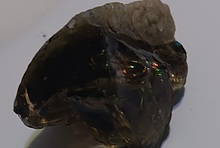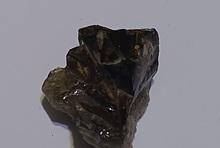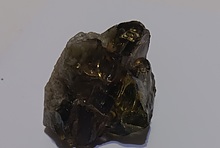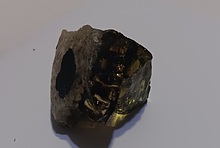Home PageAbout MindatThe Mindat ManualHistory of MindatCopyright StatusWho We AreContact UsAdvertise on Mindat
Donate to MindatCorporate SponsorshipSponsor a PageSponsored PagesMindat AdvertisersAdvertise on Mindat
Learning CenterWhat is a mineral?The most common minerals on earthInformation for EducatorsMindat ArticlesThe ElementsThe Rock H. Currier Digital LibraryGeologic Time
Minerals by PropertiesMinerals by ChemistryAdvanced Locality SearchRandom MineralRandom LocalitySearch by minIDLocalities Near MeSearch ArticlesSearch GlossaryMore Search Options
The Mindat ManualAdd a New PhotoRate PhotosLocality Edit ReportCoordinate Completion ReportAdd Glossary Item
Mining CompaniesStatisticsUsersMineral MuseumsClubs & OrganizationsMineral Shows & EventsThe Mindat DirectoryDevice SettingsThe Mineral Quiz
Photo SearchPhoto GalleriesSearch by ColorNew Photos TodayNew Photos YesterdayMembers' Photo GalleriesPast Photo of the Day GalleryPhotography
╳Discussions
💬 Home🔎 Search📅 LatestGroups
EducationOpen discussion area.Fakes & FraudsOpen discussion area.Field CollectingOpen discussion area.FossilsOpen discussion area.Gems and GemologyOpen discussion area.GeneralOpen discussion area.How to ContributeOpen discussion area.Identity HelpOpen discussion area.Improving Mindat.orgOpen discussion area.LocalitiesOpen discussion area.Lost and Stolen SpecimensOpen discussion area.MarketplaceOpen discussion area.MeteoritesOpen discussion area.Mindat ProductsOpen discussion area.Mineral ExchangesOpen discussion area.Mineral PhotographyOpen discussion area.Mineral ShowsOpen discussion area.Mineralogical ClassificationOpen discussion area.Mineralogy CourseOpen discussion area.MineralsOpen discussion area.Minerals and MuseumsOpen discussion area.PhotosOpen discussion area.Techniques for CollectorsOpen discussion area.The Rock H. Currier Digital LibraryOpen discussion area.UV MineralsOpen discussion area.Recent Images in Discussions
Mineralogical ClassificationStructure of unnamed natural FeCrO3
2nd Oct 2015 15:46 UTCUwe Kolitsch Manager
Synopsis: The crystal structure of the new mineral FeCrO3 has been determined. The single crystal studied belongs to the space group R-3 and the structure refinement shows an ordered cation distribution, consistent with the ilmenite structural type.
Abstract: A natural single crystal of the ferrimagnetic oxide FeCrO3, which was found in an opencast mine situated in the San Luis Potosí State in Mexico, has been characterized in order to elucidate some outstanding issues about the actual structure of this material. The single-crystal X-ray analysis unambiguously shows that transition metal cations are segregated in alternating layers normal to the threefold crystallographic axis, affording a structure isomorphous to that of ilmenite (FeTiO3), in the space group R-3. The possible occurrence of cation antisite and vacancy defects is below the limit of detection available from X-ray data. Structural and magnetic results are in agreement with the coherent slow intergrowth of magnetic phases provided by the two antiferromagnetic corundum-type parent oxides Fe2O3 (hematite) and Cr2O3 (eskolaite). Our results are consistent with the most recent density functional theory (DFT) studies carried out on digital FeCrO3 [Sadat Nabi & Pentcheva (2011). Phys. Rev. B, 83, 214424], and suggest that synthetic samples of FeCrO3 might present a cation distribution different to that of the ilmenite structural type.
_cell_length_a 5.0770(4)
_cell_length_c 13.9621(14)
_cell_volume 311.67(6)
Added.
I will check the ref. for the specific mine.
3rd Oct 2015 14:51 UTCUwe Kolitsch Manager
Updated.




Mindat.org is an outreach project of the Hudson Institute of Mineralogy, a 501(c)(3) not-for-profit organization.
Copyright © mindat.org and the Hudson Institute of Mineralogy 1993-2024, except where stated. Most political location boundaries are © OpenStreetMap contributors. Mindat.org relies on the contributions of thousands of members and supporters. Founded in 2000 by Jolyon Ralph.
Privacy Policy - Terms & Conditions - Contact Us / DMCA issues - Report a bug/vulnerability Current server date and time: April 19, 2024 03:02:47
Copyright © mindat.org and the Hudson Institute of Mineralogy 1993-2024, except where stated. Most political location boundaries are © OpenStreetMap contributors. Mindat.org relies on the contributions of thousands of members and supporters. Founded in 2000 by Jolyon Ralph.
Privacy Policy - Terms & Conditions - Contact Us / DMCA issues - Report a bug/vulnerability Current server date and time: April 19, 2024 03:02:47











